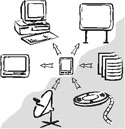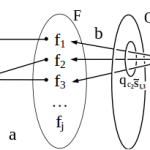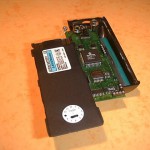
RAUM is a communication principle for spontaneous communication between small devices in Ubiquitous Computing environments. Its central idea is to use location information to assign producers and consumers of communication events in such environment and provide location aware and location dependent routing to distribute information within Ubiquitous Computing environments. The centre of the RAUM system more…

AmbientTelepresence researched the possibility to build up a ambient presence of remote people using a Ubiquitous Computing environment instrumented with embedded devices rather than with video or audio transmission. “Ambient Telepresence is a method to give someone the feeling that someone else is present while they are not co-located”. The project showed that transfer of more…

Several projects reserched the use of ambient, non-obtrusive human-computer interaction. For wearable computers, we developed an interface that is able to observe users behaviour and conclude on the behaviour (implicit Human Computer Interaction). In contrast to traditional HCI concepts, users have not to be trained for the application nor have do they need to be more…

Point&click researches on ways to control devices in the environment using a single handheld device and interface. It concludes that a split in two phases (point and click) is most appropriate also for controlling (embedded) electronic devices in a physical environment. It also found that there is less chance to find a general interface for more…

UbicompBrowser researches how electronic consumer devices embedded into the environment can be connected to the information network using Internet technologies. It results in a prototype that is able to bridge the gap between physical devices and information space by utilizing a handheld device equipped with a Barcode scanner – the UbicompBrowser. Using the UbicompBrowser software more…

The DiagnOptiMesh project will conduct original research on the possibilities to diagnose and optimize the status of commercial wireless networks based on the WirelessHART standard. This will be the first attempt to establish network diagnosis and management for wireless field bus systems used in industrial automation that will collect diagnostic information and optimize the system more…

The goal of this project is to create practical approaches to human activity recognition (HAR). HAR is the process of allowing IT devices, processes and infrastructures to be aware of the situations and activities of the human beings interacting with these systems. Awareness is typically enabled by applying data processing and machine learning techniques to more…

As computing devices and sensors get smaller, the interface with their user becomes more and more boring and irritating. The user has to explicitly input everything in detail in order to get some decent service from his device. Part of the solution to this problem is known as CONTEXT AWARENESS: thanks to hardware sensors and more…












